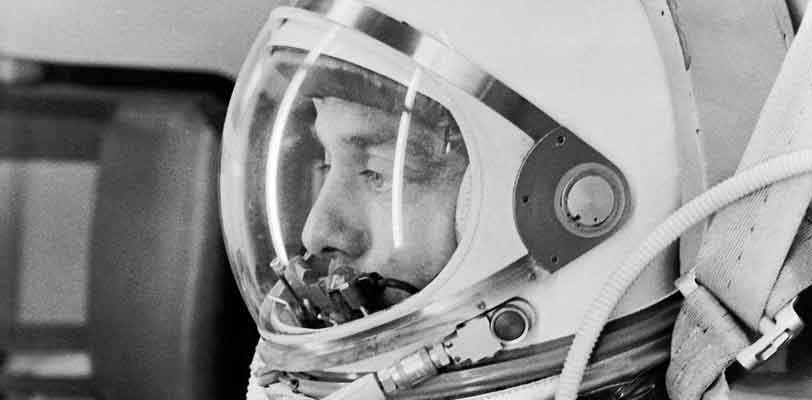One of my early grade school heroes, Alan B. Sheppard, had the right stuff decades ago. Shepard left the bonds of earth on May 5, 1961, 55 years ago.
I was not alone. Everyone in my class at Logan Grade School idolized the seven Mercury astronauts. That included the girls. We couldn't get enough of the space program.
Shepard was such a hero to me I wanted a haircut just like his -- right down to his classic receding hairline. My barber at Ledbetter's Barber Shop convinced me I was too young to have a receding hairline.
The barber, Dee Hatfield, was too nice a guy to laugh at me. Instead he laughed with me. He loved the astronauts too. It was one of our ways to escape the coalfields. I was too young to truly understand the grimness of the coal fields outside my little world.
Interest in NASA never waned for me. I never dreamed that I would grow up, become a reporter and write about launches.
In 1969 a colleague and I at Philmont Scout Ranch in New Mexico trudged through the rugged Sangre De Christo mountains to base camp to ensure we could watch history, Neil Armstrong's first small step on the moon. It was 10:56 p.m. eastern time July 20, 1969 when Armstrong took NASA's next step toward the red planet.
We watched on a battered black and white television in the mess hall in a blinding rain storm.
The government didn't need to spend money to recruit astronauts. Every televised launch was a recruiting event. Americans were captured by the spirit to get to soace first and beat the Soviet Union.
Fast forward to Nov. 22, 1989. As a reporter for United Press International I helped track a secret U.S. Air Force shuttle launch. It was laughable that the Air Force could conceal the scientific equivalent of the largest Roman candle ever made.
I can't pinpoint the day national interest began to wane. The zeal seems to be gone.
As a reporter in Florida based an hour's drive from Kennedy Space Center, manned space flight and rocket launches are commonplace. That means seeing a launch while driving along Interstate 4, or dashing to a parking lot to see the plume of fire.
Nancy, my wife, and son Patrick witnessed a launch of the Space Shuttle Endeavour from VIP viewing stands slightly closer to the launch complex than the press area.
Night shuttle launches were spectacular. My mother-in-law, Madonna Torpey, and I drove three consecutive nights to New Smyrna Beach. On two tries, the launch was scrubbed. It didn't dampen our spirit for a glimpse at history.
On the third try it was spectacular. There were hundreds of people on the beach 50 miles north of KSC eager to see another bit of history. A man nearby monitored a radio station for the countdown. Nobody talked.
The engines ignite several seconds before the countdown ends. A radio wasn't needed. From New Smyrna beach the curvature of the earth and horizon hide the launch pad. It was impossible to hide it that night.
As the rocket climbed against gravity, the contrail lit up the beach -- bright enough to read a newspaper. As it arced northward, the contrail got smaller and smaller, then disappeared.
At that point it was more than 100 miles above earth heading to the International Space Station at 18,000 miles per hour.
People are eager for the latest space race to Mars. SpaceX founder Elon Musk is aiming at 2018, several decades ahead of NASA.
It's a flawed scenario that may be bring death to the first Mars visitors. The original astronauts all gambled with death. Seventeen brave men and women lost that bet in preventable accidents. Another 12 were killed in related accidents. In addition two were killed when a Virgin Galactic craft crashed.
The Soviets lost at least four cosmonauts. The first man in space, Russian Yuri Gargarin died seven years after his historic flight in a training accident.
Instead, the space industry should concentrate on colonizing the moon. There's a lot of be learned by building habitats on the Moon, knowledge that can be very useful to establish an outpost on the red planet.
The motion picture, "The Martian," was scientifically accurate. Nobody really knows what Mars will be like. It may not be just like Matt Damon's adventure. It will be fraught with danger.
Many Americans consider a trip to the move to be economic folly. Citizens mistakenly believe that NASA consumes 20 percent of the budget. Overall it's only 0.5 percent.
Compare that five cents per tax dollar to the grim realities of the federal budget.
In 2012, the government spent about the same amount of money on farm subsidies (0.4%) and agricultural research (0.1 percent) as it did on NASA. The numbers pale in comparison to the real big ticket items — defense (24.8 percent) Social Security (22 percent), and healthcare (22.7 percent).
Budget hawks are eager for SpaceX, Blue Horizon and Virgin Galactic to replace the U.S. space program. Elon Musk of SpaceX, Jeff Bezos of Blue Horizon and Richard Branson have very deep pockets.
Part of the cash lining Musk's deep pockets comes from your tax dollars. His company received $440 million in government help in 2012. That totaled $911 million through 2013.
Commercial manned space flight will not replace government spending soon.
The spending is actually an economic boom. Kennedy Space Center accounted for $4.1 billion in financial activity in Florida. Johnson Space Center in Houston generated $2.96 billion in business volume in Texas in 2009.
Earlier this week, NASA relied on a Chinese proverb to explain how Shepard began that first step toward Mars.
According to the proverb, “A journey of a thousand miles must begin with a single step.” NASA is preparing for a journey to Mars, a planet that is 49 million miles from Earth. That journey began 55 years ago with a single, 116-mile "step" into space on May 5, 1961.
It takes a lot of very deliberate steps to travel 49 million miles.




